Catholic Saints Feast Days - November
An Overview of November Saints Days in the Catholic Calendar
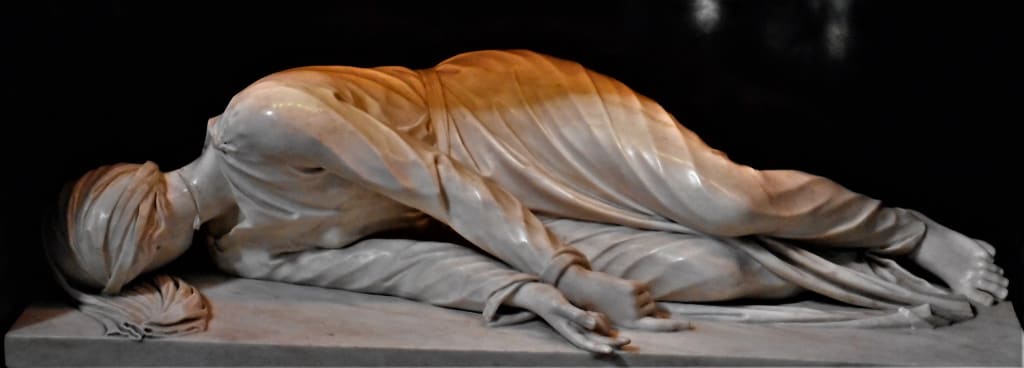
This is the fourth article in my Catholic Saints Feast Day series. Please click on a month below to see previous articles.
As explained in the August edition, there are often multiple saints celebrated on each day of the year. Within this series, I have picked out a few that I found interesting.
3rd November
St Martin de Porres Velazquez
Born in Lima, Peru, in December 1579, Martin de Porres Velazquez was the illegitimate child of a nobleman and a slave. His father was Spaniard Don Juan de Porres, and his mother was Anna Velazquez, an emancipated American black slave living in Panama.
As a result of this union, de Porres dealt with the stigma of being both illegitimate and of mixed race. Abandoned by his father, de Porres grew up in poverty. He became an apprentice to a barber surgeon in 1591.
Martin de Porres was known for his piety and charitable works, which led him to volunteer as a helper at Convent of the Most Holy Rosary, a Dominican community, in 1594. He used his medical skills to help heal people. At the time, his racial background prevented de Porres from becoming a full member of a religious order so he was not immediately offered the habit.
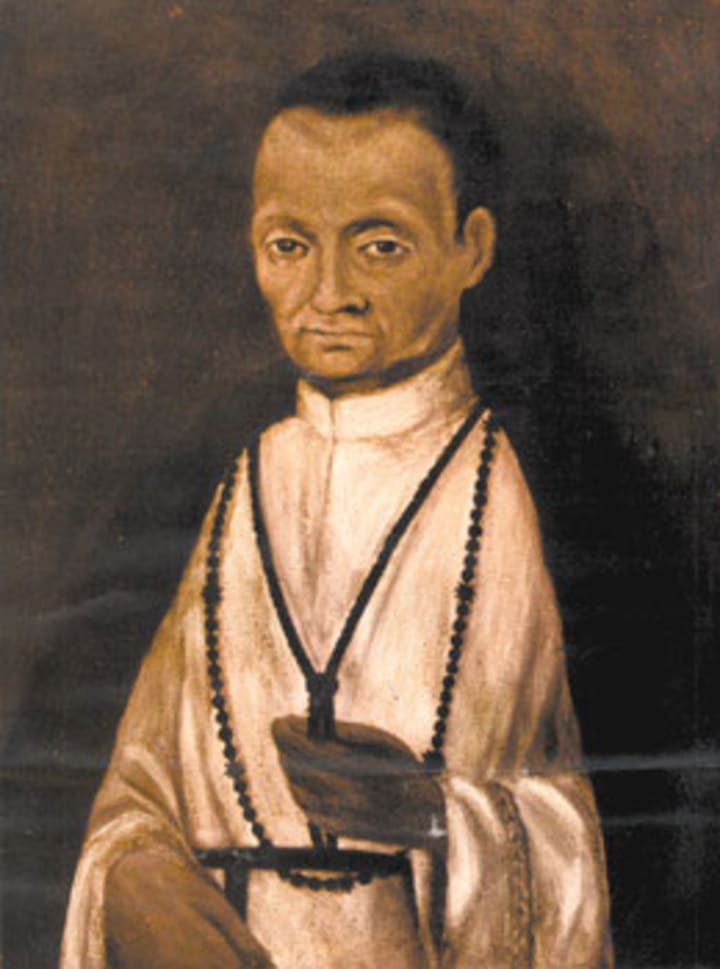
In 1594, the requirement preventing black men from receiving the habit was suspended. De Porres had gained a reputation as a miracle healer and was allowed to continue his work as a friar. Martin would take care of anyone, and welcomed them regardless of race or wealth. He created a refuge for stray animals, founded an orphanage for abandoned children and slaves, and was known for raising dowries in a short amount of time.
He died on 3rd November 1639, and many miracles are said to have happened after his death. Martin was beatified in 1837 by Pope Gregory XVI. On 10th January 1945, Fray Martin Porres was officially named patron saint of social justice. He is the patron saint of, among other things, mixed race people and of the UK's Leech Clinic.
In 1962, de Porres was canonised by Pope John XXIII, making him the first black saint of the Americas.
St Winifred
A 7th century martyr of Welsh origin, Saint Winfred (or Winefride) is said to have been celebrated from the 8th century. She became popular, however, when her biography was written in the 12th century. At this time, she was venerated more in England than in Wales, therefore recorded as an English saint by historian Caesar Baronius in the 16th century.
Winifred's father was a Welsh nobleman, and her mother had close family connections with the King of Wales.
Winifred's father wanted her to marry, but she chose to become a nun instead. She fled to her uncle, Saint Bueno, but did not make it inside the chapel before she was beheaded by Caradoc, the father of her would-be suitor. Bueno came out of his chapel and cursed Caradoc, who melted like wax, and put Winifred's head back on her body. A healing well sprang up where her head fell, and she was restored.
There are two major shrines to St Winifred - Shrewsbury Abbey in England, and the healing waters of Holywell in Wales. Known as St Winifred's Well, this Flintshire shrine is a Grade I listed building and scheduled ancient monument, and claims to be the oldest continually visited pilgrimage site in Great Britain. There are reports of its cures to the present day.
St Malachy
In 1094, Saint Malachy was born in Armagh, the ecclesiastical capital of Ireland. It is the seat of the Archbishop of Armagh and Primates of All Ireland for both Roman Catholic and Church of Ireland. Malachy is also known as Mael Maedoc ua Morgair or Maolrnhaodhog ua Morgair.
Malachy was educated in Armagh, and was ordained a priest there in 1119. In 1123. he was made Bishop of County Down, where he restored the Abbey of Bangor. The following year, he was appointed Bishop of Connor but left due to disputes over his position, and became Abbot of Iveragh.
It was Archbishop Ceallach who had ordained Malachy, and he would go on to nominate Malachy as his successor as abbot and archbishop. This had traditionally been a hereditary succession so this decision was not welcome by everyone. He was, however, inducted in 1132 but resigned five years later.
Malachy went to Rome in 1139 to secure the pallium, but Pope Innocent II refused to grant it. He tried a second time but died at Clairvaux Abbey on his way in 1148. In 1190, Saint Malachy became the first native Irish man to be canonised.
There are writings sometimes attributed to Malachy, 'The Prophecy of the Popes'. This is a series of 112 short, cryptic phrases in Latin which purport to predict the Roman Catholic popes. This, however, was not known until the late 16th Century and is believed to have been falsely attributed to Malachy by its author, Arnold Wion, a Benedictine monk.
Malachy is the patron saint of Archdiocese of Armagh and the Diocese of Down and Connor. It is also accepted that he was a document figure in Church reform during his time.
11th November
St Martin of Tours
In Saboria, Pannonia (now Szombathely, Hungary) in 316 AD, Martin was born just before the legalisation of Christianity in the Roman Empire.
As a high-ranking officer in the Horse Guard, Martin's father was posted to Ticinun, Italy, and this is where Martin would grow up. Born to pagan parents, Martin chose to become a Christian at the age of 10. At 15, he was obliged to follow his father into the cavalry corps of the Roman army.
St Martin's Cathedral in Leicester, England (often referred to as Leicester Cathedral) is thought to be originally of Norman construction, although there had been an Anglo-Saxon building dedicated to St Martin of Tours.
St Rhedyw
St Rhedyw (or Rhedius/Rhedicus) is said to have been born in Arfon and moved to Gaul. The church dedicated to him in Llanllyfri is one of the oldest churches in Wales.
There is not a lot known about Rhedyw, and information differs between sources. According to the Nantlle Valley website, Rhedyw was a writer during the 4th century, although other sources suggest Rhedyw was not born until the 5th century. The site also records his feast day as 6th July, while catholicreadings.org states the feast day as 11th November.
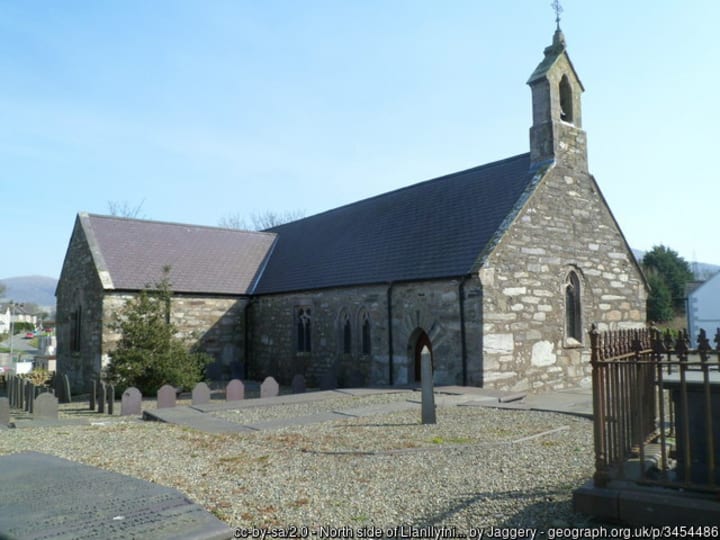
While there is speculation as to his possible descendants, no other information is thought to have survived. St Rhedyw's death is unknown.
16th November
St Mary of Scotland
Mary of Scotland, also known as Margaret of Scotland or Margaret of Wessex, was born in Mecseknadasdi, Hungary, in 1045. She was an English princess, daughter of Princess Agatha of Hungary and Prince Edward of England. Edward spent most of his life in exile in Hungary following the defeat of his father, Edmund Ironside, by King Cnut.
Mary became a Scottish queen when she married Malcolm III in 1070. It is rumoured that Mary initially declined Malcolm's proposal, preferring a life of piety and chastity. They did, however, have a happy marriage.
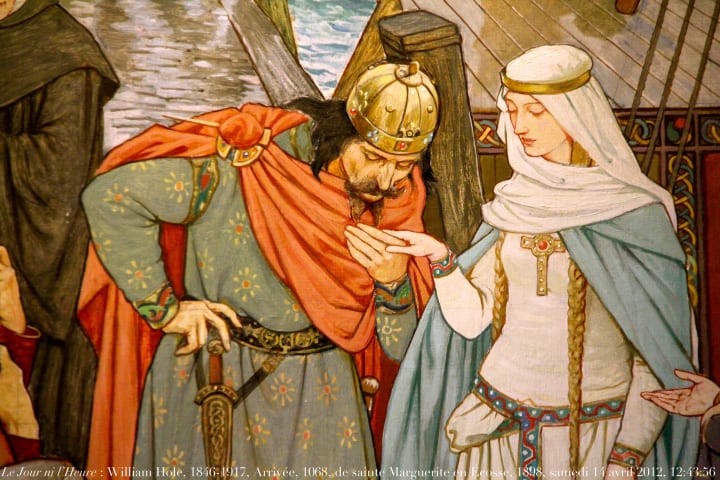
Mary founded various churches, monasteries, and pilgrimage hostels. She found the Royal Mausoleum at Dunfirmline, and she instigated the Queen's Ferry over the Forth so that people could more easily reach the shrine of St Andrew. The town of Queensferry is named for this.
Known as the 'Pearl of Scotland', St Mary is credited with a number of miracles. One of those miracles is 'Queen Margaret's Gospel'. King Malcolm liked Mary's lavishly decorated personal gospel, although Malcolm could not read. When he travelled, a priest would carry the gospel. When Mary asked for the book during a journey, the priest had lost it. A soldier was sent to look for it, and found the book floating in a stream. The book was undamaged. It remains intact today at the Bodleian Library in Oxford.
In 1093, Mary's husband and eldest son died in battle. She passed away three days later on 16th November at Edinburgh Castle.
St Mary is the female patron of Scotland, and was made a saint in 1249 for services to the poor.
20th November
St Francis Xavier Can
Francis Xavier Can (not to be confused with 16th Century Spanish missionary Francis Xavier) was born in Sou-Ming, Vietnam, in 1803. He was a layman who worked as a catechist with priests of the Foreign Missions of Paris.
Francis, or Phanxicô Xaviê Can, was arrested but offered freedom if he renounced his faith. Francis refused and was strangled in prison. As well as 20th November, Francis is also venerated on 24th November with the Vietnamese Martyrs with whom he was canonised by Pope John Paul II on 19th June 1988.
Edmund the Martyr
Born on Christmas Day 841 AD, Edmund became King of East England in 855. He was brought up as a Christian, and is said to have been a model and pious ruler.
Edmund fought alongside King Alfred of Wessex against Viking and Norse invaders (Great Heathen Army) until Edmund's army was defeated and he was captured. Edmund was ordered to renounce his faith so he could share power with the Vikings.
Edmund is said to have died courageously at the hands of non-Christian invaders. As such, he was martyred.
According to a 10th Century account, Edmund was shot with arrows and beheaded. It is not known where he died, but is believed to be in the county of either Essex or Suffolk, possibly at Bury St Edmunds. In 902, Edmund's remains were moved to Bedricsworth (modern day Bury St Edmunds) where King Athelred founded a community to care for his shrine. This became a place of pilgrimage, and St Edmund continued to hold great influence with England's kings. The abbey, built by King Canute in 1020, became very wealthy.
Edmund's influence began to wane during the third crusade of 1199 when King Richard visited the tomb of St George. Following this visit, Richard won a great victory. He adopted St George as patron of the army. In 1348, Edward III declared George the patron saint of England.
Edmund's shrine and relics were destroy in 1539 during the reformation.
While George is the commonly accepted patron saint of England, Edmund was the first. Edmund is also patron saint of kings and pandemics.
22nd November
St Cecilia
Born in Rome in 200 AD, Cecilia was possibly a noble lady of Rome. She made a vow of virginity but her parents forced her to marry pagan nobleman Valerian. During their wedding, it is claimed that Cecilia sat apart and sang to God in her heart or that she heard heavenly music in her heart. This event, along with the claim that she sang to God as she was dying, is the reason Cecilia was made patron saint of music.
Valerian and his brother, Tiburtius, converted to Christianity after seeing an angel. The brothers were arrested and sentenced to death, but their bravery and willingness to die for their faith led their executioner, Maximus, to convert. The three were executed together either in Rome or Sicily. They received their crowns of martyrdom in 229.
Cecilia distributed her possessions to the poor. Roman prefect Amalchius sentenced Cecilia to death for this. Amalchius ordered for Cecilia to be burned, although some accounts state that she was sentenced to suffocation. When the flames did not harm Cecilia, Amalchius ordered her beheading.
There is a legend that Pope Paschal I had an apparition of Cecilia showing him where her body was kept, which had never been found. Paschal began to build a basilica immediately after the discovery of the body in catacombs of San Calisto. This is said to have been built on the remains of Cecilia's house. Basilica de Cecilia in Trastavere, Italy, is a major shrine. Cecilia is one of seven women (excluding the Blessed Virgin) to be commemorated by name in the Canon of the Mass, and she is venerated in Catholic, Orthodox, Anglican, and some Lutheran churches.
Stephen and Mark of Antioch
Stephen and Mark (possibly two Marks) of Antioch were born in Turkey. Their dates of birth are unknown. The men were taken prisoner for proclaiming in public that Chris was the true God. They were tortured for refusing to deny their faith. Magnus, Governor of Antioch, order their beheadings.
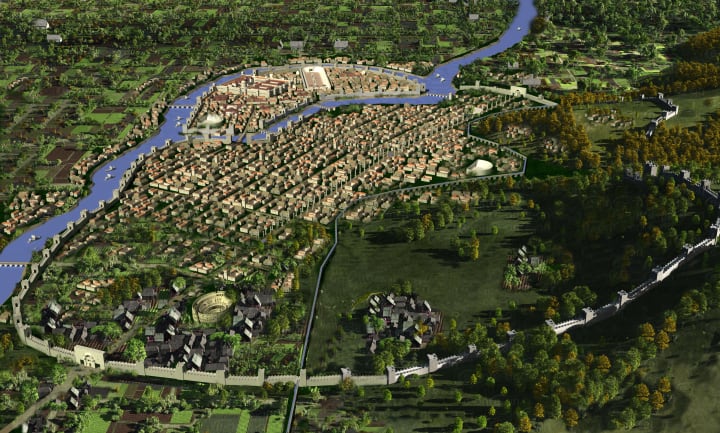
The date of death is not known, but they were killed at Antioch, Pisidia in Turkey. Stephen and Mark were canonised pre-congregation. No further information about them appears to have survived.
30th November
St Tudwal
Tudwal, possibly born in December 528, was a Breton monk. He is believed to be one of the seven founder saints of Brittany. Tudwal is known by various names such as 'Pabu', meaning 'father', among the Bretons.
There is a small archipelago in the Llyn Peninsula, North Wales, called St Tudwal's Islands. The remains of a priory can be seen on its eastern side. These islands are believed to be the original hermitage of St Tudwal and, presumably, why the island bears his name. He is remembered at various sites on the Llyn Peninsula.
Tudwal travelled to Ireland to learn the scriptures then became a hermit. He later immigrated to Brittany with his mother, sister, and other relations. The Celtic language of Brittany is close to Welsh so they could be easily understood. St Tudwal is said to be the son of Hoel Mawr (Hoel I) and brother of Saint Lenorius.
Tudwal's cousin, Deroc, was king of Dumonia (Devon, Cornwall, and some parts of Somerset and Dorset). Tudwal promoted his faith in that area, and founded a monastery at Lan Paku in Spain.
Eventually, Tudwal became bishop of Treguier in France with King Childerbert, King of the Franks, as his patron. Tudwal died there in 564.
Tro Breizh (Tour of Brittany) is a pilgrimage that links towns of seven founding saints - Celtic monks from Britain who had settled after Anglo-Saxon incursion. Treguier was one of the first bishoprics.
St Joseph Marchand
One of the more recent saints in this collection, Joseph Marchand was born 17th August 1803 in Passavant, France.
At the age of 25, Joseph joined the Paris Foreign Mission. In 1832, he was offered the position of head of the Foreign Mission Seminary. Marchand declined in order to continue his work in the field.
In 1833, Joseph Marchand turned down an offer to join a revolt to overthrow Emperor Minh Mang. He was, however, arrested in 1835 for supposedly having been involved with the rebellion. Marhand was executed at Hue, Vietnam. His death is recorded as 30th November 1835 in Ho Chi Minh City.
Marchand's death made him a Catholic martyr, having flesh pulled from his bones by hot tongs. His body was chopped into pieces and thrown into the sea.
Joseph Marchand was venerated then beatified by Pope Leo XIII on 2nd July 1899 and 27th May 1900 respectively. He was then canonised on 19th June 1988 by John Paul II. Marchand's feast day is 30th November, but he is also venerated on 24th November with the Vietnamese Martyrs.
Andrew the Apostle
Andrew the Apostle was one of Jesus' 12 Apostles. The word 'Apostle' comes from Greek 'apostolos' meaning 'person sent'.

Andrew was born in Galilee, Israel (then part of the Roman Empire) during the second half of the first century AD. He is famously patron saint of Scotland but, perhaps less well-known, also of other places including Romania, Russia, and Ukraine. Along with his brother Peter (St Peter or Simon Peter), Andrew is patron saint of fisherman. The brothers lived and worked as fishermen.
Andrew is said to have travelled to Greece to preach Christianity. There, he was crucified on a saltire (X-shaped cross), which is represented on the flag of Scotland. The flag is sometimes referred to as the Saltire.
Feasts in St Andrew's honour were held as far back as 1000 AD but he did not officially become patron of Scotland until The Declaration of Arbroath in 1320. The flag of Scotland is the cross of St Andrew. The town of St Andrews claims to be his final resting place. A chapel was built to house his remains, and the town became a place of pilgrimage.
Relics alleged to have belonged to Andrew are stored at the Basilica of St Andrew in Patras, Greece, which is where he is thought to have died on 30th November 60 AD. It is not known what happened to his remains, but stories include that his bones were brought to St Andrews, Scotland, in the 8th century with his remaining parts taken to Constantinople and kept at the Church of the Holy Apostles.






Comments
There are no comments for this story
Be the first to respond and start the conversation.